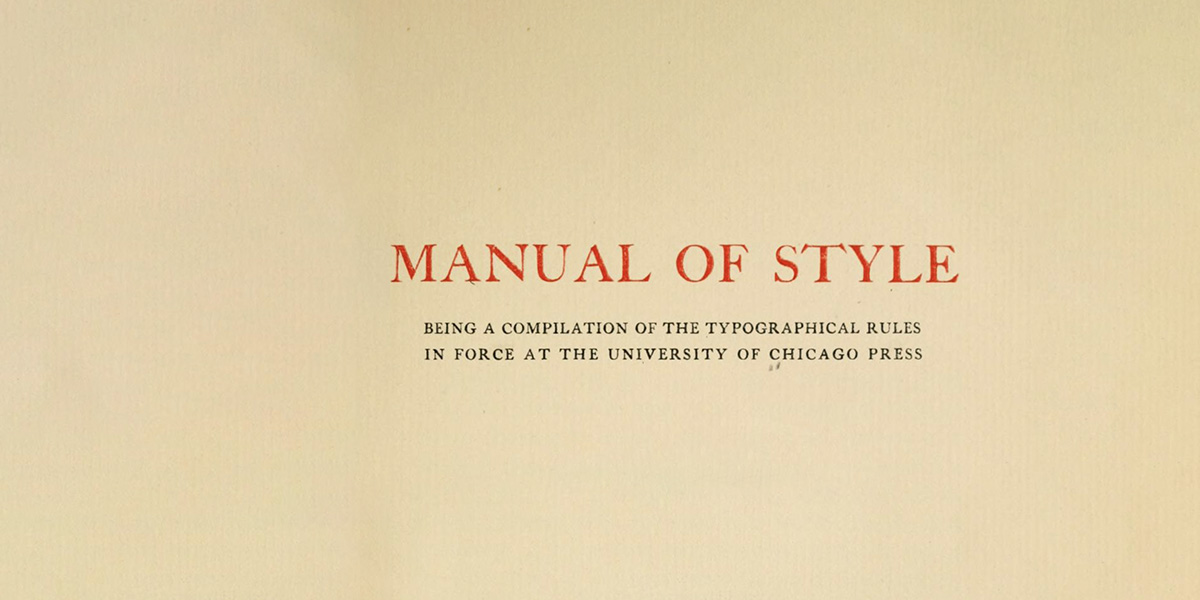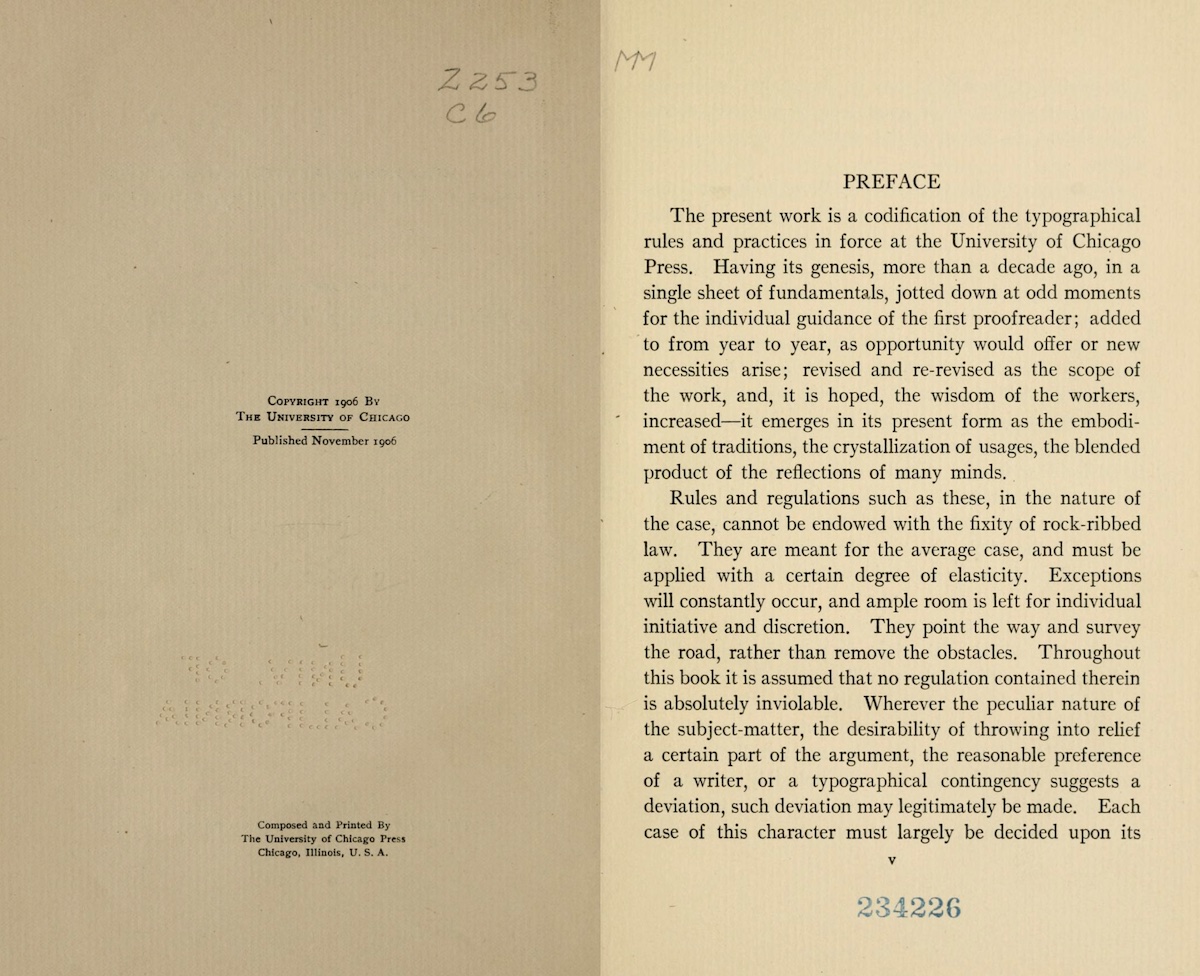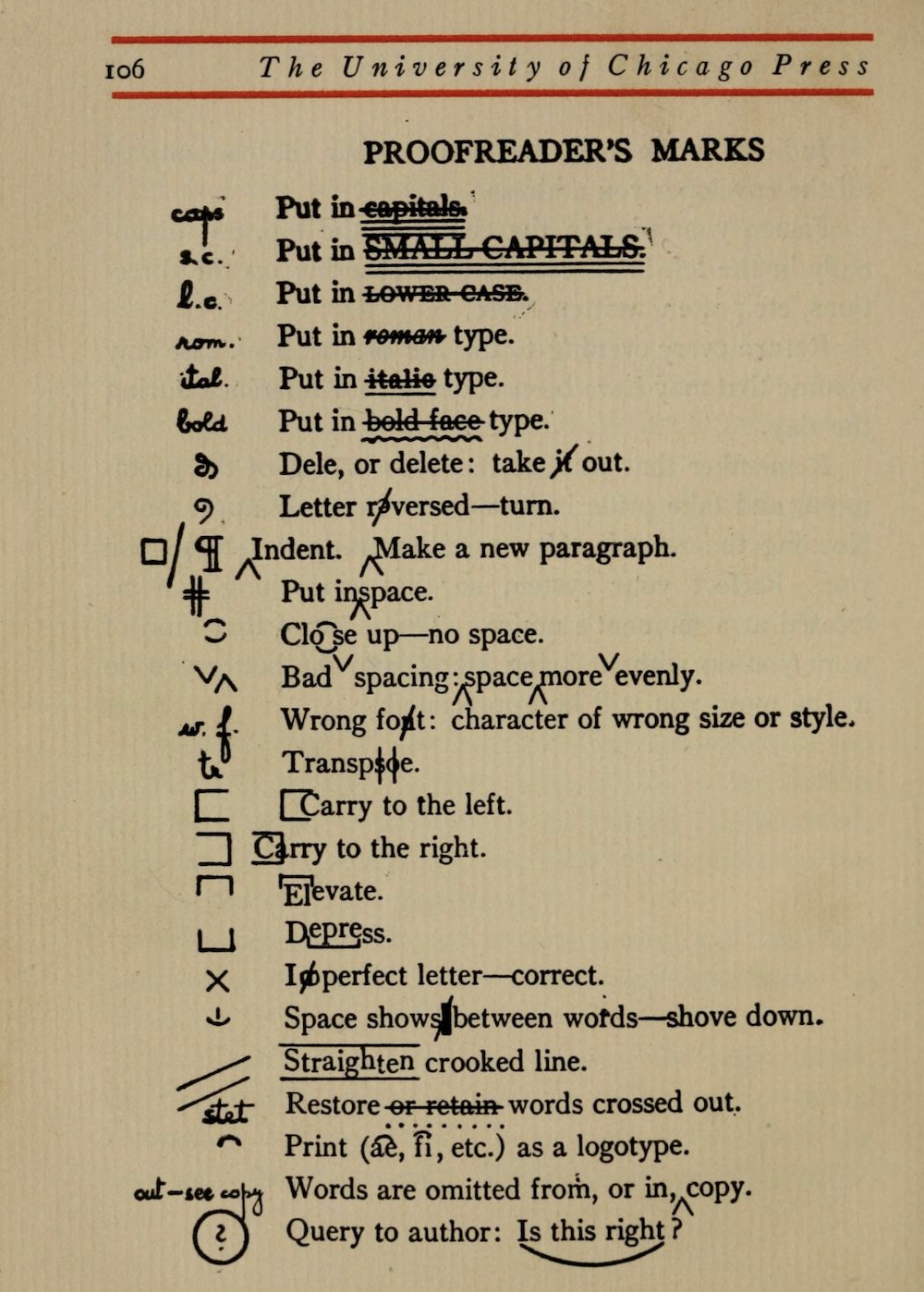
Exceptions will constantly occur: Advice from the original Chicago Manual of Style
To fellow gropers in the labyrinth of typographical style...
The first edition of the Chicago Manual of Style wasn’t nearly as imposing as today’s 1,146-page tome. With merely 106 pages of grammar and composition rules—plus another hundred or so pages of typeface samples—it was actually reasonable to read it cover-to-cover.
Its title was unwieldy at best: Manual of Style: Being a compilation of the typographical rules in force at the University of Chicago Press, to which are appended specimens of type in use. Yet its prose was focused, fluid, and self-aware.
For the original Manual of Style didn’t take itself too seriously. “Exceptions will constantly occur,” its intro advised. “Do not waste time over matters of style,” it suggests as the book is coming to a close, advice that could be well heeded by internet grammar fiends.
The original Manual of Style includes, perhaps, better tips for writing and editing than you’ll find in the more structured modern version.
Here are its most quotable quotes:

Rules and regulations such as these, in the nature of the case, cannot be endowed with the fixity of rock-ribbed law. They are meant for the average case, and must be applied with a certain degree of elasticity.
Exceptions will constantly occur, and ample room is left for individual initiative and discretion. They point the way and survey the road, rather than remove the obstacles. Throughout this book it is assumed that no regulation contained therein is absolutely inviolable.
Where no question of good taste or good logic is involved, deference should be shown to the expressed wishes of the author.
Applicability, in the printing-office, is a better test than iron-clad consistency, and common-sense a safer guide than abstract logic.
If, in addition to this its main object, this Manual of Style may incidentally prove helpful to other gropers in the labyrinth of typographical style, its purpose will have been abundantly realized.
~
Read everything as if you yourself were the author, and your reputation and fortune depended upon its accuracy.
About many matters in this world, grammar and logic included, there is abundant room for differences of opinion.
Never hesitate to correct anything that is palpably wrong, however positively the copy may assert the contrary.
If work, for whatever reason, is accumulating upon your table faster than you can attend to it, or if you find that you cannot single-handed get out a piece of work at the time promised, notify the one in charge—and notify him in time.
Do not permit yourself to be stampeded. Cultivate speed, but remember that accuracy is even more important. Do things right.
~
Remember that the small words are as essential as the big ones.
Do not waste time over matters of style.
As soon as you have an article completed, send it out.
Perfect your system so that everything can be located at a moment’s notice.

The Original Chicago Manual of Style's Proofreading Marks, with liberal use of underscores back when everything was edited on paper.
Further Reading: Read the full original edition of the University of Chicago Press’ Manual of Style from the PDF shared by the CMOS Online or from the Internet Archive.
